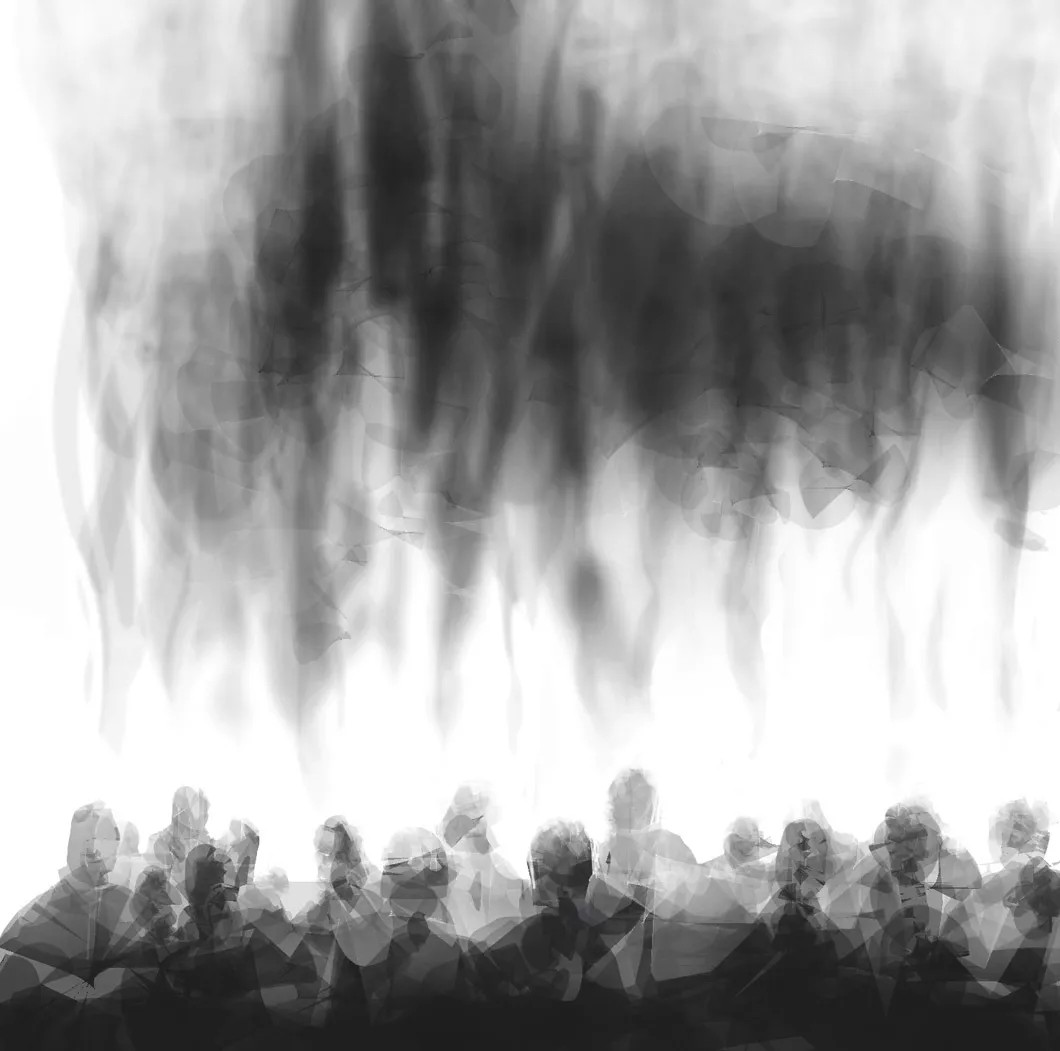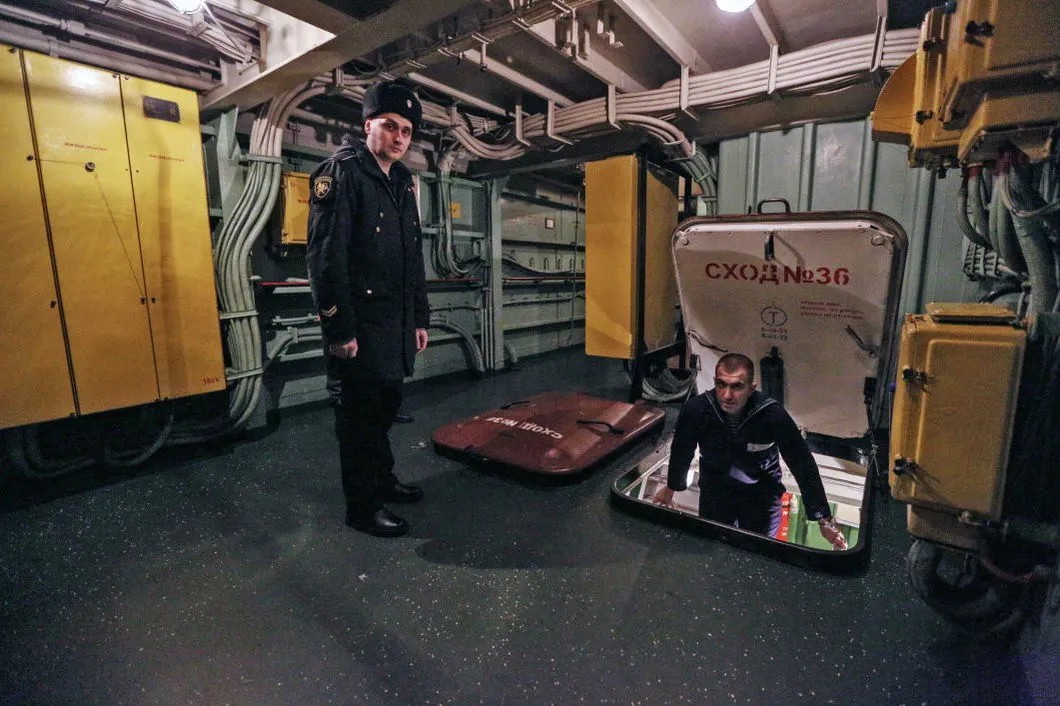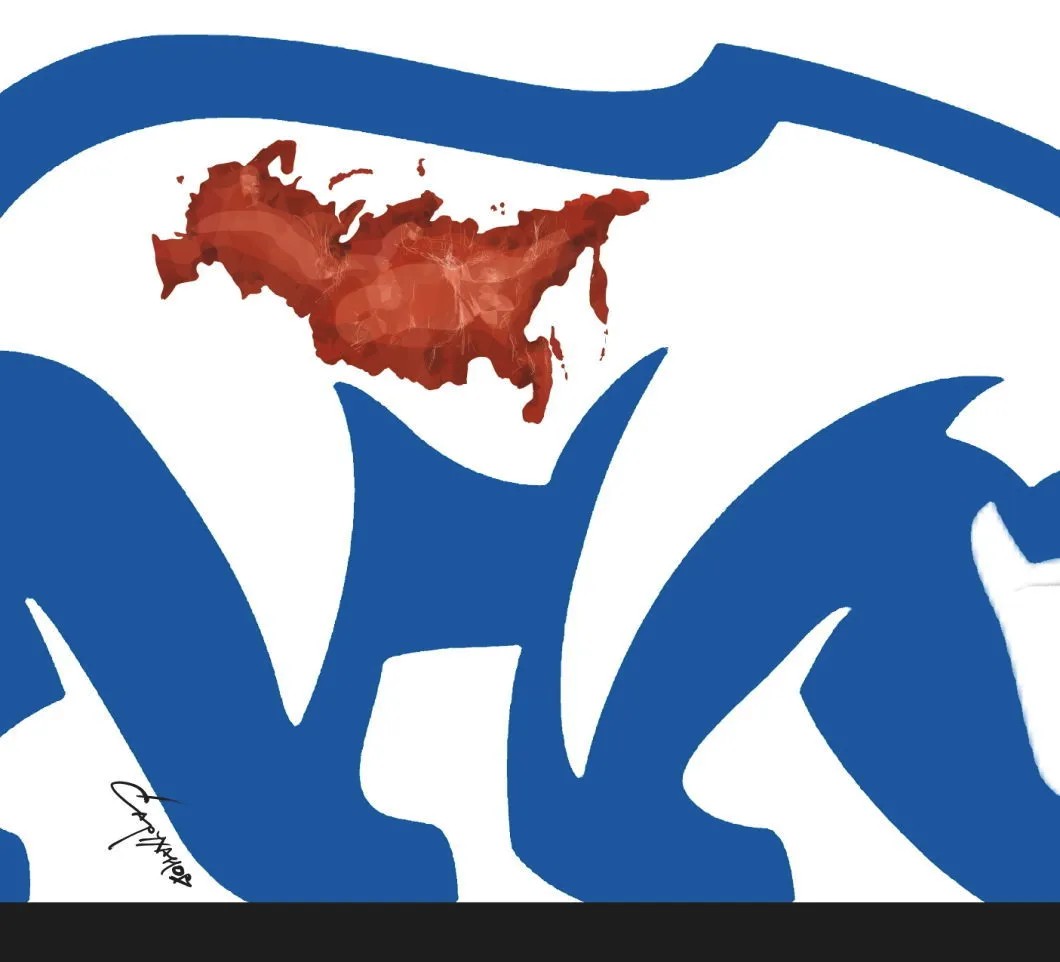This Week’s Highlights
Novaya Gazeta exposes a campaign against pro-democracy leaders led by Kremlin fixer Yevgeny Prigozhin, industrial toxins cause genetic mutations in the Siberian city of Krasnoyarsk, what a lethal fire on Russia’s only aircraft carrier can tell you about the modern Russian state and the world’s most popular web server becomes a target of corporate raiding by the Russian government.
Want to get the full story? Click the links below for full-length articles in Russian.
New feature! Russia, Explained Audio Briefing. Also available on Apple Podcasts and Google Podcasts!
Dirty Campaign Against Pro-democracy Leaders, Exposed

Kremlin-linked fixer Yevgeny Prigozhin worked to compromise pro-democracy leaders ahead of the 2019 Moscow City Duma Elections, says a new Novaya Gazeta report based on leaked documents. The documents revealed a detailed plan by Prigozhin-linked individuals to smear and sabotage independent candidate Lyubov Sobol – the most well-known face of Russia’s pro-democracy protests abroad.
The “Sobol Hunt”. Novaya Gazeta gained access to a detailed action plan called the “Sobol Hunt.” It outlined plans for attacks on members of her political headquarters, agents infiltrating her team, regular police detentions, complaints to government watchdogs and other provocations. Sobol’s headquarters confirmed that many of these measures were implemented. Since then, Novaya Gazeta has transferred the documents to Russia’s Investigative Committee to initiate criminal proceedings for the obstruction of electoral activities.
The “activists”. One of the actors in the anti-Sobol campaign, Igor Mangushev, is a former member of the now-banned E.N.O.T. Corp; a far-right paramilitary group that fought for the separatists in Eastern Ukraine. In a conversation with Novaya Gazeta, he admitted to having worked with the Prigozhin-owned media group Patriot, which paid him 300 thousand roubles (about $4,800) to produce a fake news video about opposition leaders Lyubov Sobol and Ilya Yashin falsifying campaign signatures. Furthermore, Mangushev is not the only actor who was paid thousands of dollars to carry out projects within the Prigozhin-backed campaign. See our full report for more examples.
We were targeted, too. Novaya Gazeta has faced attacks from Prigozhin for the better part of a decade. The leak for the anti-Sobol campaign revealed that his affiliates were behind a 2017 attack on our journalist Yulia Latynina, as well. A receipt from one of Prigozhin’s companies revealed that they paid 130 thousand roubles (over $2,000) to have Latynina doused in excrement.
Backstory. Between the mass anti-government protests, the controversial sentences handed out in the Moscow Case and the widespread movement in support of political prisoners, the 2019 Moscow City Duma elections resulted in the largest political crisis Russia has seen in years. And the fact that Kremlin-linked fixer Yevgeny Prigozhin is playing a role comes as no surprise — he has been doing the Kremlin’s ‘dirty work’ everywhere from Africa to Russian “troll factories,” is under U.S. sanctions and has been linked to attacks on other activists, as well as the 2018 murder of three Russian journalists in the Central African Republic.
Read the full expose on the Prigozhin-backed campaign against pro-democracy leaders here.
Genetic Mutations in Krasnoyarsk, Explained

The Krasnoyarsk Aluminium Factory (KrAZ) opened in 1964 and has been poisoning the local environment ever since. Located outside of the Siberian city of Krasnoyarsk, the factory belongs to the business empire of U.S.-sanctioned billionaire oligarch, Oleg Deripaska. As part of his company RUSAL (one of the largest producers of aluminum in the world), KrAZ is a core enterprise for the city. But both the company and the government are ignoring the factory’s detrimental impact on the environment. As part of Novaya Gazeta’s ongoing reporting on environmental crimes across Russia, our journalist traveled to the region to cover the harmful effects of the factory’s industrial toxins.
Genetic Mutations.The Krasnoyarsk Aluminium Factory has been giving off Benzo(a)pyrene for over half a century – and this carcinogenic compound (also found in coal tar and tobacco smoke) is known to cause genetic mutations. These are already visible in the surrounding environment: the plants are dead, the neighboring villages have cows without horns and dogs are born with five legs.
Reduced Sentences. There are three prisons near the factory, where the convicts work in polluted conditions; coming into direct contact with toxic soot. Because KrAZ employees often go into early retirement due to working in harmful conditions, some prisoners are calling for reduced sentences as compensation for breathing in toxic chemicals around the clock. One prisoner, who has already been diagnosed with cancer, told Novaya Gazeta that he was forced to continue working in the industrial area like everyone else. “When we left work, there was such a degree of smog from the aluminum exhaust that you couldn’t see past the end of your nose. The most powerful emissions are at night. In the afternoon, you wipe the dust from the windowsill – there’s a new layer after just three hours,” he said.
Backstory. The Krasnoyarsk Aluminum Factory smelts more than a million tons (or two billion dollars worth) of aluminum annually. While some claim that it is a “core enterprise” for the city and a key budget contributor for both Siberia and Russia, the factory only employs 0.39% of Krasnoyarsk’s population and contributed just $12.7 million to the regional budget last year (0.36%). Meanwhile, it is turning the city of Krasnoyarsk into an environmental disaster zone.
Read the full report on the toxic impact of the Krasnoyarsk Aluminum Factory here.
Поддержите
нашу работу!
Нажимая кнопку «Стать соучастником»,
я принимаю условия и подтверждаю свое гражданство РФ
Если у вас есть вопросы, пишите [email protected] или звоните:
+7 (929) 612-03-68
Russia’s ‘Unlucky’ Aircraft Carrier Bears a Striking Symbolism

Russia’s only aircraft carrier, the “Admiral Kuznetsov”, caught fire in the far-northern port of Murmansk on December 13, 2019 – leaving two people dead and 12 injured.
Human Error. For some, the tragedy came as no surprise – the “Admiral Kuznetsov” has seen its fair share of unfortunate events in its 32 years of service and keeping it operational comes at a high cost, not only in terms of the military’s budget but also with regard to loss of life. For years the carrier stood docked at a mooring wall. It had its first combat experience during a Syrian campaign two years ago, which reportedly cost somewhere between $120 to $160 million. What’s more, the “Admiral Kuznetsov” is slow and hard to maneuver; it reaches a maximum speed of fewer than nine knots (about 16.7 km/hr). The ship has also seen several major fires on board, which almost always broke out due to human error.
Symbolism. The “Admiral Kuznetsov” was smuggled out of the Crimean port of Sevastopol in 1991, leaving behind part of its crew to prevent it from becoming a Ukrainian vessel after the collapse of the Soviet Union. Last year, the American publication The National Interest listed the “Admiral Kuznetsov” among the five worst aircraft carriers ever put to sea. Despite the carrier’s checkered past, Russian patriots call it a symbol of the power of the Russian fleet. “The [Kuznetsov] is more like a symbol of the Russian state machine: expensive, ineffective, uncompetitive, but looks like a scary monster,” writes Novaya Gazeta correspondent Tatyana Britskaya. Meanwhile, experts believe that the “Admiral Kuznetsov” will be undergoing repairs until 2023.
Read the full story of the unfortunate events aboard the “Admiral Kuznetsov” here.
Corporate Raiding in Russia, Explained

The Russian government is often the biggest obstacle preventing the country’s tech scene from flourishing. And in the aftermath of a collapsed attempt to raid the Moscow-based company Nginx, the world’s most popular web server, the problem of the state becoming instrumental in corporate raiding has captured the public’s attention once again.
Official Story. Last week, under the pretense of protecting intellectual property rights in a corporate dispute, Russian law-enforcement carried out searches and interrogations at Nginx – the web server behind major companies like Netflix and Facebook. The legal reasoning behind the investigation was so flimsy that it collapsed under public scrutiny and the embarrassed plaintiff was forced to withdraw the complaint. Instead, what the incident has exposed is another example of the private sector recruiting state law-enforcement for hostile takeover campaigns.
The state assists the raiders. The outsized role of administrative resources and connections in the Russian economy creates a significant opening for extorting rents, says economist Grigory Bazhenov. He argues that in the absence of universal “rules of the game” – like a fair arbitration system and protections for individual property rights – the economic role of the security services is continuing to gain ground. “If, in spite of this type of institutional environment, an innovative segment of the economy does suddenly arise, ‘entrepreneurs’ from law enforcement agencies will eventually get there,” Bazhenov says.
Undermining tech industry. “The state is not fulfilling its function,” writes Novaya Gazeta columnist Kirill Martinov, who criticizes the system’s failure to protect the equality of citizens and companies before the law. Long story short, Russia is no stranger to corporate raiding and the case of Nginx is just one more example of the many ways in which the government is undermining the tech industry. As Martinov puts it: “All the best [things] in Russia – from high-tech IT companies to philanthropy – are done not thanks to but contrary to the state.”
Read Novaya Gazeta columnist Kirill Martinov’s take on the Nginx corporate raids here.
Top Story: 25th Anniversary of the First Chechen War

This week’s top story from Novaya Gazeta was a special report marking the twenty-fifth anniversary of the First Chechen War. The story gained a remarkable amount of traffic and at the time of this writing has reached over 330 thousand website readers since it was published on December 10, 2019. The publication’s popularity speaks to the fact that the Chechen Wars are still an integral topic that peaks widespread interest in Russia today. The wars in Chechnya played a fundamental role in the making of President Vladimir Putin’s Russia – even though the first war was fought under his predecessor, Boris Yeltsin.
Read the special edition report on the 25th anniversary of the First Chechen War here.
Thanks for reading! To keep up with Novaya Gazeta’s reporting throughout the week, you can follow us on Facebook, Twitter, Instagram and Telegram. Our video content is available on Youtube and don’t forget to visit our website for the latest stories in Russian. Until next time!
— The Novaya Gazeta Newsletter Team
Поддержите
нашу работу!
Нажимая кнопку «Стать соучастником»,
я принимаю условия и подтверждаю свое гражданство РФ
Если у вас есть вопросы, пишите [email protected] или звоните:
+7 (929) 612-03-68
